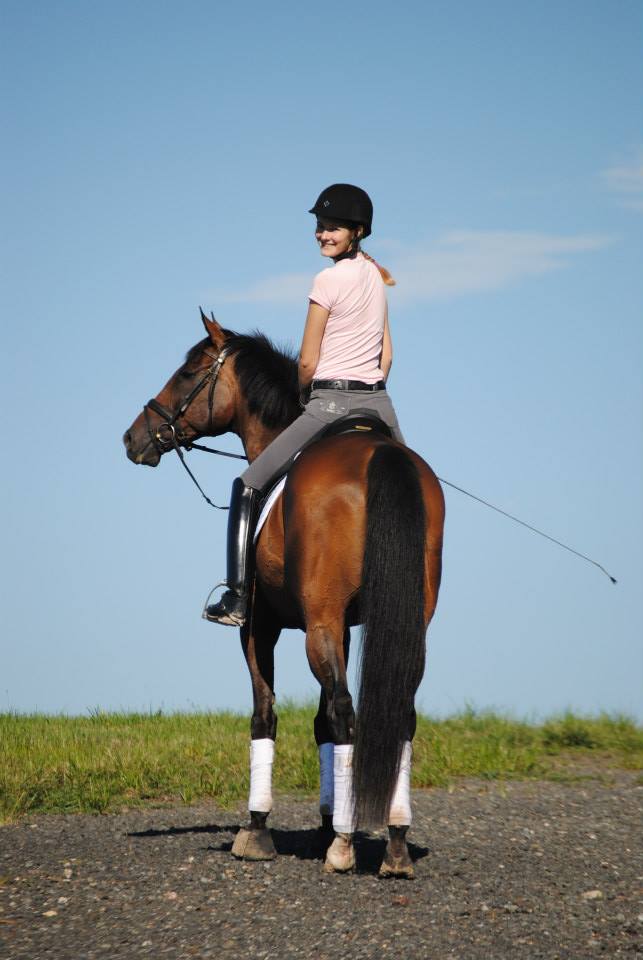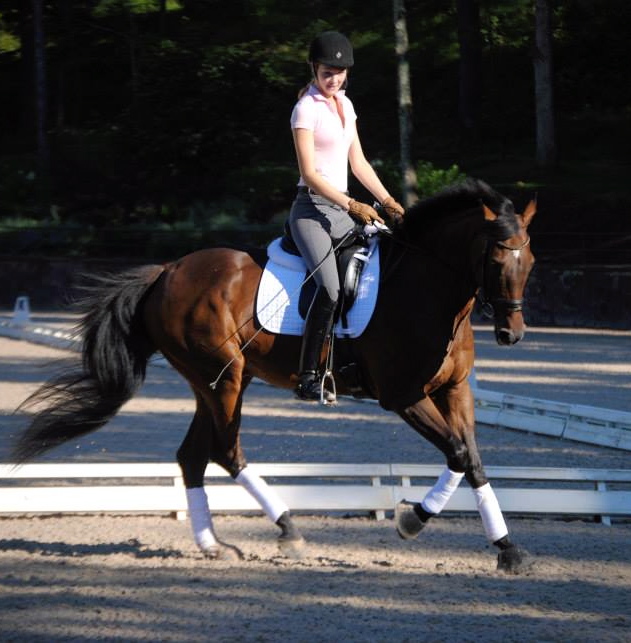This looks SO FUN!! Too bad it wasn't an Olympic sport -maybe next year it will be! If that happens, Skijoring is ALL I will be watching!! ~Declan
Horse-Drawn Ski Racing Was Almost an Olympic Sport
By Justin Peters As posted on Slate

Wikimedia Commons/Kaila Angello
If you’re like me, you’ve been watching the Winter Olympics and thinking, All these ski events are great, but they’d be even better if the skiers were being towed by a team of horses. With that in mind, imagine how thrilled I was to discover the great sport ofskijoring, or, as I like to call it, “horse-drawn waterskiing on snow.” In skijoring, a skier hangs on to a rope attached to a horse (or a dog, or a snowmobile) and glides across the snow until she falls down or the horse gets tired. Eighty-six years ago, the sport was on the verge of becoming a full-fledged Olympic event. This is a discussion we need to revive immediately.
Skijoring is a Norwegian word that roughly translates as ski driving, or driving on skis; it’s taken from kjøring, which means driving, and ski, which means ski. In the following video, taken at a modern-day skijoring event in Montana, the skiers don’t look like they’re driving so much as holding on for dear life, but let’s not split semantic hairs:
Looks like fun, doesn’t it? As you can clearly see from the video, the sport of skijoring requires balance, agility, a talent for ring-grabbing, and a love for classic guitar-driven rock 'n' roll. In 2009 the Boston Globe reported that, these days, a “typical course runs 1,000 feet and features 12 slalom gates, six ‘jousting rings’ that a skier must grab, and three ramp-like jumps ranging from 2-6 feet in height." So, basically, it’s skiing meets the rodeo meets Medieval Times. Why isn’t this on every network in America?
Skijoring began in Norway in the 19th century as a way to speed the transmission of army dispatches, according to E. John B. Allen in The Culture and Sport of Skiing. It soon grew popular in many parts of the world among people with daredevil spirits and unfettered access to draft animals and rope. “Horsemanship was one of the aristocracy’s remaining differences from the urban masses, so the appeal of skijoring was a natural one,” writes Allen. “Children were pulled by dog and pony, British officers in India tried it behind a yak, Sami behind reindeer, and men from the industrial world behind motorcycle, car, and even airplane.”
Competitive skijoring was included in the Nordic Games—a nationalistic celebration of cold-weather sport that was the predecessor to the Winter Olympics—in the first decade of the 20th century, where it caught the eye of Baron Pierre de Coubertin, the founder of the modern Olympics. Coubertin was a fan of weird sports with militaristic overtones—he invented the modern pentathlon, a Summer Olympic event involving gunplay and horsemanship, as a test of skill for cavalry officers—so his appreciation for skijoring came as no big surprise. He expressed his hope that there might one day be room for skijoring in the Olympic Games. (Coubertin was not a huge fan of non-horse-drawn skiing, apparently. According to an essay in The Olympics at the Millennium, he thought downhill skiing “was hardly a sport to uphold his Olympic ideals of international peace and reconciliation shrouded under the auspices of antiquity.” I shudder to think what he would say about ice dancing.)
Coubertin eventually got his wish, as skijoring was made an Olympic demonstration sport at the St. Moritz Games, in 1928. These were the days when getting towed on skis by horses and/or dogs was a primary mode of transportation for much of the world, and yet only seven people competed in the mass-start skijoring event. And it was sort of boring. (Skiboring, you might say.) The event, which was held on a frozen lake, included no jumps or slaloms—just seven dudes on skis getting pulled behind riderless horses. When the race was concluded, apparently no one even bothered to write down the victors’ first names.
That was the end for skijoring at the Olympics. But it wasn’t the end for the sport. Skijoring is still practiced in Scandinavia, Switzerland, and in other remote northern regions where they apparently don’t have satellite cable. The sport has gained niche popularity in America, too, in places like Whitefish, Mont., home of the World Ski Joring Championships. Skijoring first became popular in Whitefish in the 1950s, apparently, “with just four guys in a bar talking about who was the best skier, who was the best drinker, and who was the best horseman.” But isn’t that how everything good in America got started?
Today the North American Ski Joring Association sanctions races across the country, and while modern skijorers still dream that the sport might one day return to the Olympics, this does not seem very likely. Even so, I’m willing to put in some work to make this happen. Just tell me whom to call, or provide me with a form letter that I can sign and mail, and I’ll do my part.













